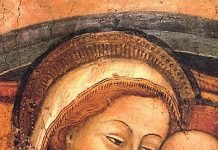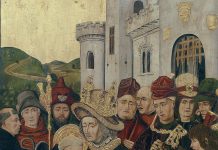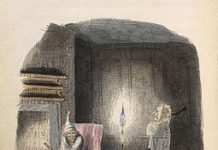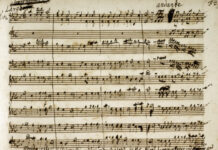Second only to St. Boniface, St. Peter Canisius, born in Holland, is known as the apostle of Germany, Switzerland, Holland, and other northern European countries for standing up, triumphantly, against the roaring dogmatic ruptures of the Reformation.
In 1897, Pope Leo XIII wrote in high commendation of St. Peter Canisius within his encyclical letter, Militantis Ecclesiae, addressed to archbishops and bishops of Austria, Germany, and Switzerland. Writing on the 300th anniversary of St. Peter Canisius’ death, December 21st, Pope Leo XIII writes:
There exist, in effect, certain analogies between our age and the period in which Canisius lived: a period when the spirit of revolution and looseness of doctrine resulted in a great loss of faith and decline in morals. To deliver youth especially from this double scourge was the goal of this man who, after Boniface, is the second apostle of Germany. He achieved this purpose principally by establishing schools and publishing good books as well as by effective sermons and penetrating debates. (Militantis Ecclesiae, 2)
St. Peter Canisius’ response to the heretical outbursts of the Reformation are exemplary even for educators of the modern age. Pope Leo XIII portrays St. Peter Cansius as a militant leader amid a battle for truth, arming generations amidst the turmoil of the early 1500s. He writes his letter to bishops, in order “to present the vigorous leader Peter Canisius as a model to all who fight for Christ in the Church’s army. By realizing that they must ally the weapons of knowledge with the weapons of justice, they will be able to defend the faith more vigorously and effectively” (Militantis Ecclesiae, 4). Saint Peter Canisius assuredly earned the acclamation.
St. Peter Canisius was born in Nimwegen (in the Netherlands) on May 8, 1521, to Jacob and Ægidia Canisius. At the age of fifteen, Peter went to Cologne, where he studied theology, civil law, and arts. He earned a masters in arts by the year 1540. That same year, St. Peter Canisius vowed to remain celibate, although his father had wished that he be married to a rich young woman. The order St. Peter Canisius would later join, the Society of Jesus (founded by Ignatius of Loyola), coincidentally received approval from P. Paul III in the year 1540. St. Peter Canisius entered the priesthood in 1546. Very quickly he encountered trials, amidst his vocation, against the apostate archbishop, Hermann von Wied. He, among the priests in his diocese, was sent to obtain help and guidance, against Hermann von Wied, from the papal nuncio, clergy members from Liege, and even Emperor Charles V. In 1547, St. Peter Canisius participated in the eccelsasitical council which began at Trent, but was then moved elsewhere to Bologna. From here, St. Peter Canisius travelled to Rome and lived under the guidance of St. Ignatius himself.
As an aspiring scholar, St. Peter soon entered upon a path of both teaching rhetoric and preaching, with much persuasive eloquence. His teaching career extended to both Messina and Sicily; his reputation won him an assignment, upon the request of Duke William IV of Bavaria, to teach at the University of Ingolstadt. St. Peter Canisius soon after received his doctorate in theology.
It wasn’t until the year 1549 that St. Peter Cansisius became a professed Jesuit. He made his vows in Rome; St. Ignatius was present at his entrance into the Society of Jesus. His ministry, as a Jesuit, included being rector at the University of Ingolstadt in 1550, until he was moved to a college in Vienna. St. Peter Canisius quite frequently visited prisons, offering the sacraments. He was offered the office of bishopric in Vienna by Julius III; he, however, declined the lofty position. Amongst his many encounters with the rising flares of heresy, St. Peter Canisius publicly opposed a court preacher, Phauser, who was a married priest and advocate for Lutheranism. It was St. Peter that disputed Phauser’s preaching position with King Ferdinand I, who eventually removed Phauser from the preaching office. St. Peter Canisius also opened Jesuit colleges in both Prague and Ingolstadt. Hence, the young Dutch Jesuit came to be known for his value of liberal arts education.
Meanwhile, within the Society of Jesus, St. Peter Canisius was also appointed provincial superior in Upper Germany. Under the pope’s instruction, he participated in the religious dialogue which was occuring at Worms. His astounding sermons continued to be delivered to the faithful, while he stayed in Worms. St. Peter was known for his public opposition to Melanchthon, a prominent German Lutheran; his upfront opposition and strength of faith and character preserved many Catholics from falling into the quandaries of heresy, which were spreading like an epidemic across Europe at the time.
St. Peter Canisius, a great proponent of educating the faithful, was also at the forefront of catechesis. He communicated with bishops concerning the catechesis of children, and preached all over the districts of his geographical assignment, seeking to strengthen Catholics in their frailties and debunk the errors which had been preached to them by others previously.
After attending the First General Congregation of the Society of Jesus, St. Peter Canisius was commissioned by P. Paul IV to go to Poland, as papal nuncio, and to attend the imperial Diet of Pieterkow. Shortly afterwards, he was also summoned to the Diet of Augsburg. After delivering masterful sermons at the Augsburg cathedral, St. Peter Canisius was requested as stationary preacher for the cathedral. He accepted, and held the role for several years. A commentator from Catholic Encyclopedia notes that “in 1560 the clergy of the cathedral of Augsburg testified that by his sermons nine hundred persons had been brought back to the Church, and in May, 1562, it was reported the Easter communicants numbered one thousand more than in former years” (Catholic Encyclopedia, “Saint Peter Canisius”). He used this position as an opportunity to catechise the faithful, preaching volumes-worth, as his manuscripts bear witness to. Massive congregations would gather to hear St. Peter Canisius propound the truth, while the storm of the Reformation continued to rage outside the Church. Alms were so generously donated to the Jesuits, for their ministry at the cathedral, that other ministering clergy members sought to restrict the activity of St. Peter Canisius, allowing him to continue preaching, but forbidding him to administer sacraments at the cathedral.
In 1562, St. Peter Canisius attended the Council of Trent. He continued opening colleges and supporting the education of Catholics, as a tool against the spreading of error. In 1571, he was requested to fill the role of court preacher for the archduke Ferdinand II. Places like Fribourg in Switzerland retained Catholicity throughout the Reformation due to St. Peter’s unceasing efforts and preaching. St. Nicholas, patron of Fribourg, is said to have foretold St. Peter Canisius’ dwelling in Fribourg until his death on December 21, 1597.
The volumes of writing under St. Peter Canisius’ name verify that he considered penmanship as a highly-effective mode of evangelism and catechesis, in addition to preaching. Over the course of his lifetime, the archives of the Society of Jesus overflowed with his sermons and publications. He is known for writing a catechism in 1557-58.
During his lifetime his ‘Catechism’ appeared in more than 200 editions in at least twelve languages. It was one of the works which influenced St. Aloysius Gonzaga to enter the Society of Jesus; it converted, among others, Count Palatine Wolfgang Wilhelm of Neuburg; and as late as the eighteenth century in many places the words “Canisi” and catechism were synonymous. (Catholic Encyclopedia, “Saint Peter Canisius”)
St. Peter wrote extensively on Scripture, seeking to refute the errors concerning Scripture and its interpretation which were circulating within his time. He was also known for having written an extensive Summa Theologica, a pedagogical encapsulation of the fundamentals of Christian doctrine.
It is not a wonder that Pope Leo XIII condoned St. Peter Canisius, acclaiming him for combatting the Protestant Reformation with the furtherance of Catholic education. In Militantis Ecclesiae, Pope Leo XIII writes that “the Summa which he published for this purpose is a compact and tightly-knit work, written in beautiful Latin and not unworthy of the Fathers of the Church. This remarkable work was enthusiastically received by learned men in almost all the countries of Europe” (Militantis Ecclesiae, 8). Furthermore, Pope Leo XIII writes in admiration of St. Peter Canisius’ effort to catechise the faithful:
Less voluminous but no less useful were the two famous catechisms which this blessed man wrote for less cultivated minds: one for the religious instruction of children, the other for young men already involved in the study of the arts. These two works had such a great success among Catholics immediately upon publication that almost all professors charged with teaching the basics of the faith had them in hand. They were used not only in the schools as a spiritual milk for the children, but they were also explained publicly in the churches to the benefit of all. Thus, during three centuries Canisius has been regarded as the teacher of Catholics in Germany. In popular speech “knowing Canisius” was synonymous with “preserving the Christian faith”. (Militantis Ecclesiae, 8).
In an audience delivered on February 9, 2011, Pope Benedict XVI resounds the esteem given to St. Peter Canisius by Pope Leo XIII. Labouring as an apostle in Germany and northern Europe, St. Peter Canisius had a great devotion to the apostles Peter and Paul. Pope Benedict XVI records St. Peter Canisius as having said:
I felt that a great consolation and the presence of grace had been granted to me through these intercessors [Peter and Paul]. They confirmed my mission in Germany and seemed to transmit to me, as an apostle of Germany, the support of their benevolence. You know, Lord, in how many ways and how often on that same day you entrusted Germany to me, which I was later to continue to be concerned about and for which I would have liked to live and die. (Pope Benedict XVI)
Given that St. Peter Canisius was sent to evangelize in Germany, during the Lutheran Reformation, the “task of Canisius — charged with revitalizing or renewing the Catholic faith in the Germanic countries — was almost impossible” (Pope Benedict XVI). The mission accomplished by St. Peter Canisius was nearly miraculous.
St. Peter Canisius’ life and apostolate stands as an exemplary model for missionaries, pastors and educators of all ages to follow, amidst the continual battle for the Catholic faith, which encompasses all time eras. As Pope Benedict XVI writes, with much veracity:
The example that St Peter Canisius has bequeathed to us, not only in his works but especially with his life, is ever timely and of lasting value. He teaches clearly that the apostolic ministry is effective and produces fruits of salvation in hearts only if the preacher is a personal witness of Jesus and an instrument at his disposal, bound to him closely by faith in his Gospel and in his Church, by a morally consistent life and by prayer as ceaseless as love. And this is true for every Christian who wishes to live his adherence to Christ with commitment and fidelity. (Pope Benedict XVI)
Resources:
https://w2.vatican.va/content/benedict-xvi/en/audiences/2011/documents/hf_ben-xvi_aud_20110209.html
https://www.catholicnewsagency.com/saint/st-peter-canisius-91












